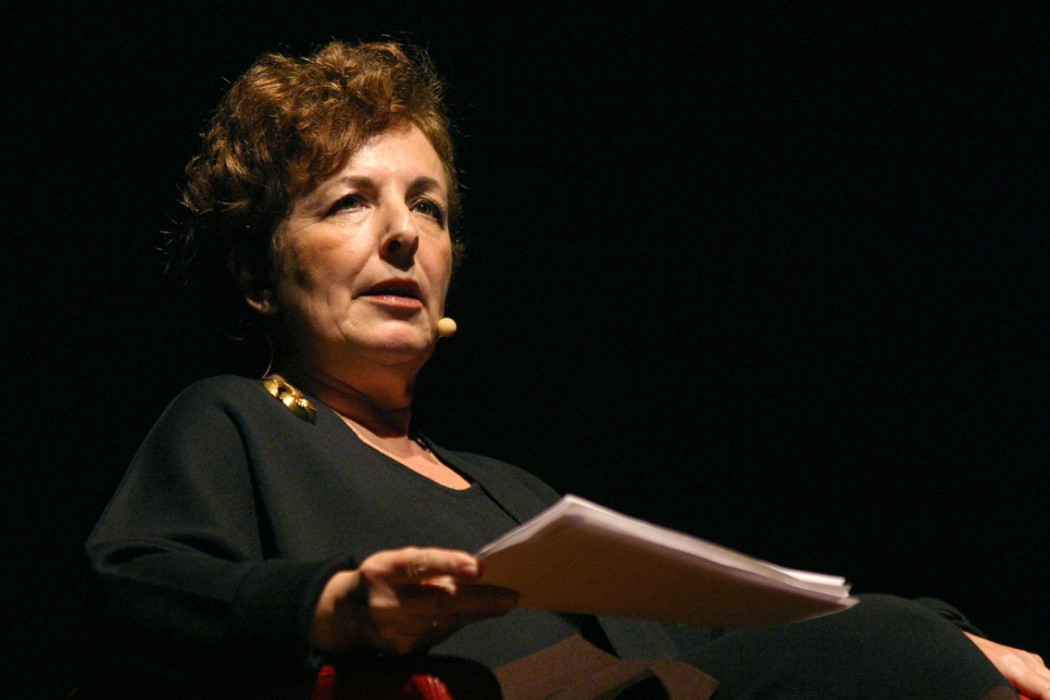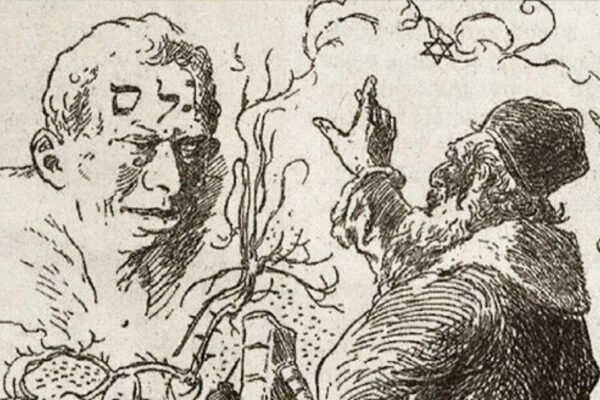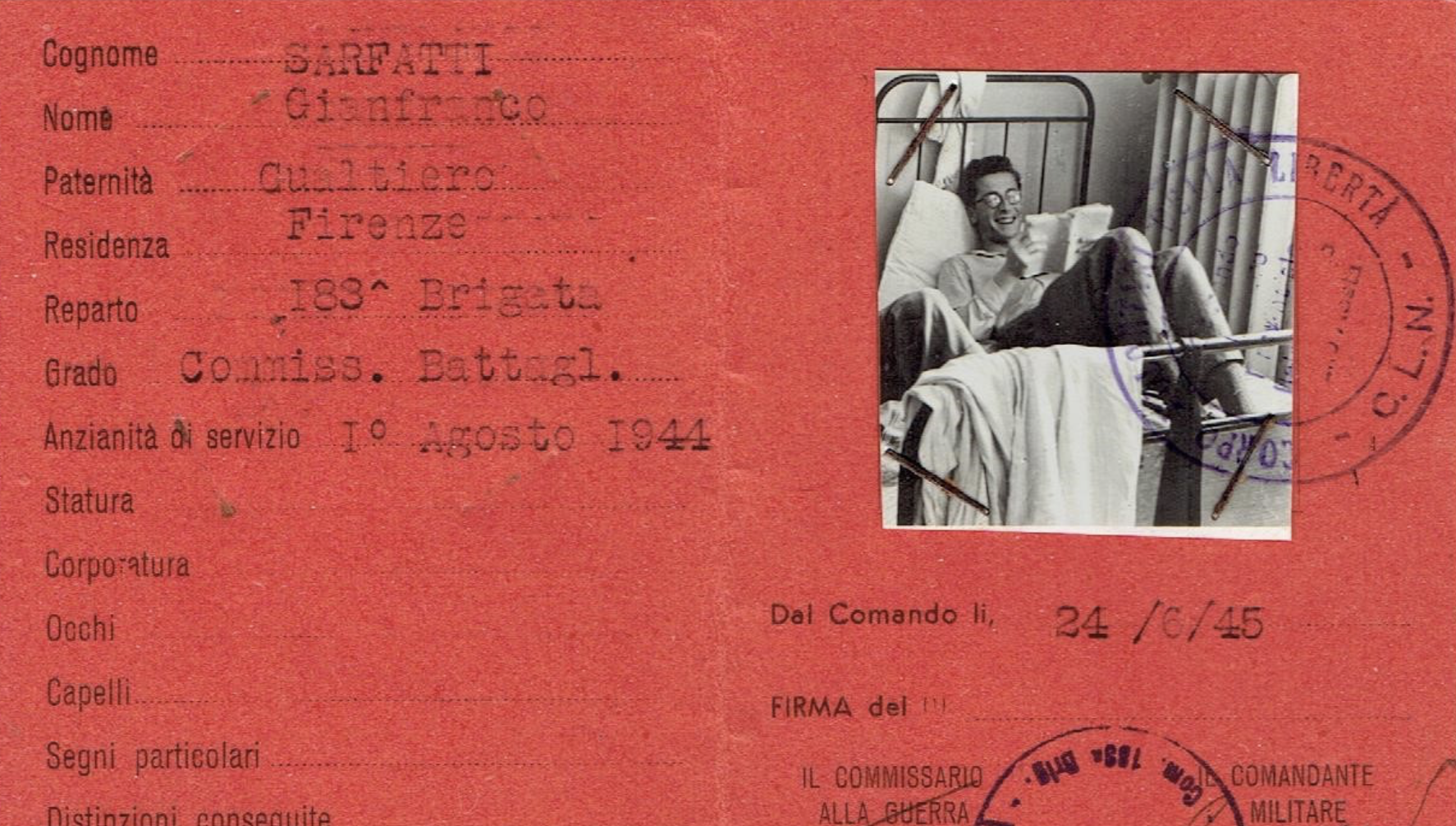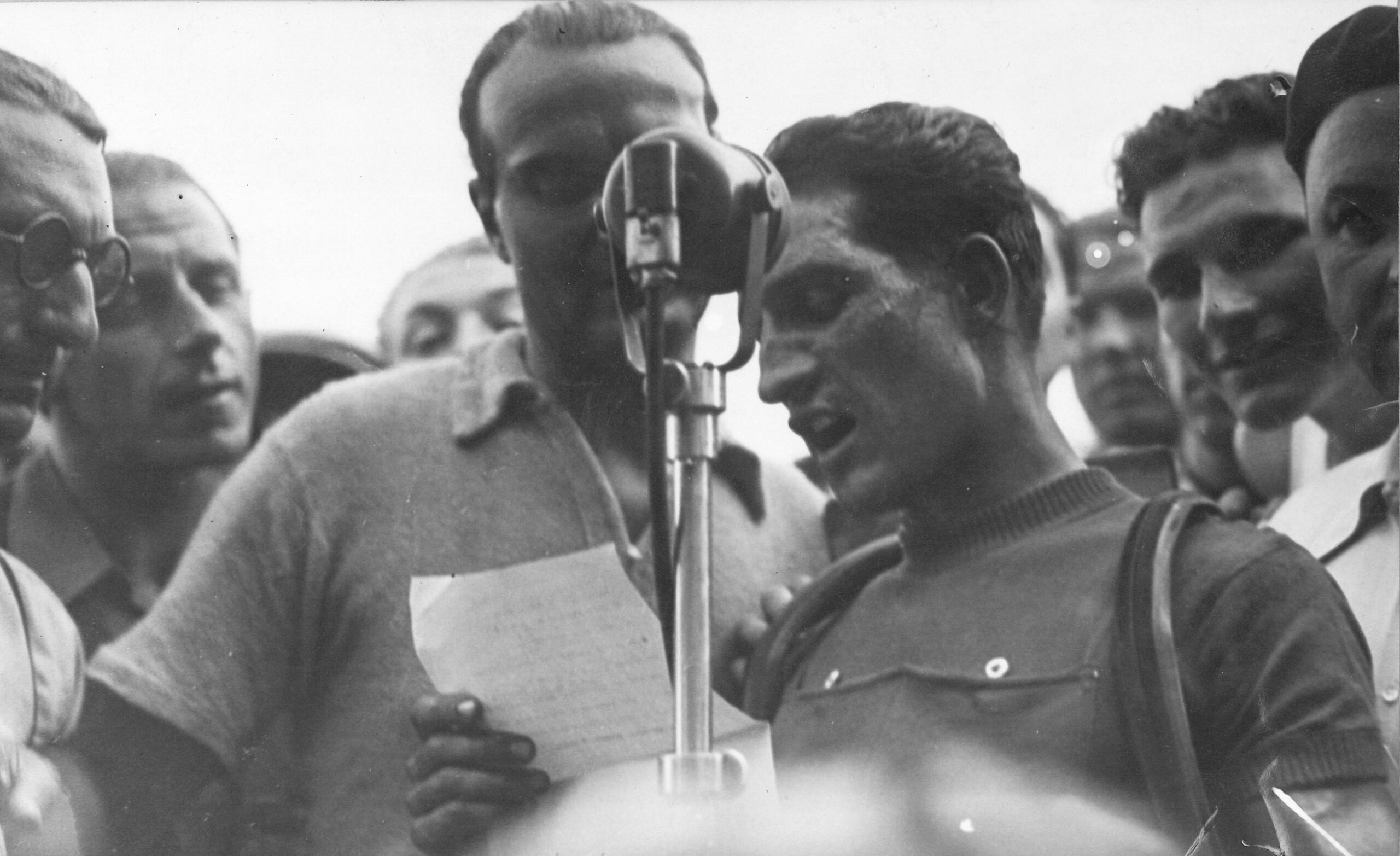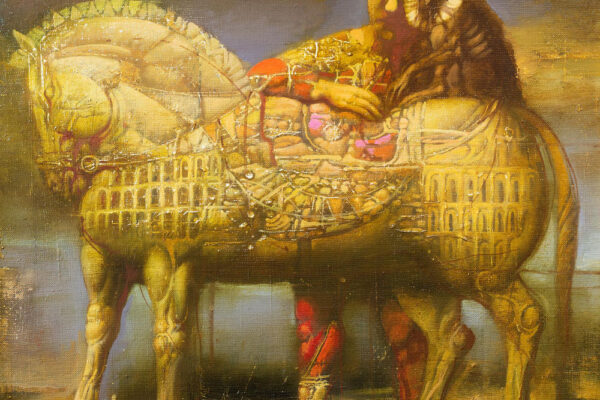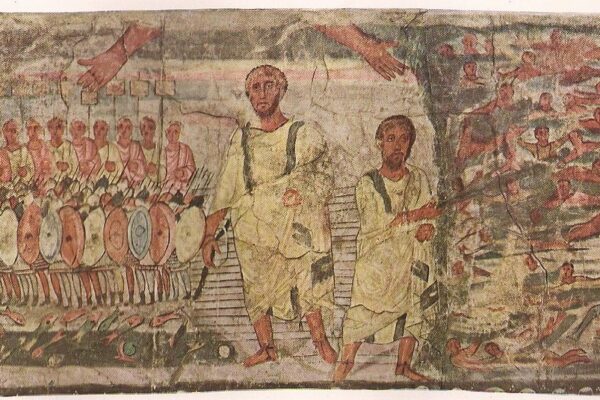Opening speech at the Italian Jewish Congress 2011
The intensity and strength of the Italian Jewish minority’s connection with Italian Unification is well known. Aware that any hope of emancipation – long denied them by the old regime – lay with the novatori, Italian Jews took an active role in Mazzini’s conspiratorial actions, the movements of 1820-21 and 1830-31, the battle for the Roman Republic of 1848 in defense of which they spilled blood, the wars of the Risorgimento, and in the seizure of Rome on September 20, 1870 during witch a Piedmontese Jewish officer gave the order to open fire.
But emancipation, won by the Piedmontese Jews in 1848 – along side the Waldenses – and in due course by the Jews of the other Italian states was not merely a radical change of direction by the Jewish Communities that populated the peninsula. It was a defining moment in the construction of the new Italy. Far from being some sort of incidental consequence of unification, the principle of emancipation profoundly marked the course of the new state, and was to become – along with the related principles of religious tolerance and equality – one of its cornerstones.
It is no coincidence that in those decades the Jews of Europe took their lead from the Italian Risorgimento. Moses Hess, the socialist philosopher, one of the founders of Zionism and the author of the famous book Rome and Jerusalem (1861) drew inspiration for his idea of a Jewish national revival from Italian nation-building. In the same spirit, in 1918, Dante Lattes defined irredentism (from the Italian political movement born in the second half of 19th Century and claiming for Italy all the “unredeemed” regions under Austrian rule) as Italian Zionism and Zionism as Jewish irredentism.
This emphasis reveals the nature of the process of Jewish emancipation as indivisible from that of the Italian homeland. In other words it is a true “parallel nationalization”- of the Jews and of other Italians – as Arnaldo Momigliano affirmed in his famous text from 1933, “the molding of an Italian national consciousness in Jews is analogous to the molding of a national consciousness in the Piedmontese, the Neapolitans, or the Sicilians: it is a shared moment on the same journey and it is this moment which characterize it as such.
The origins of this tight bond between the two movements and of the identification of Jews with the Italian State are myriad and complex. Of these, the earliest – and perhaps most telling – is the fact that the Jewish community was deeply rooted in Italy. Dating as far back as Roman antiquity, Italian Jews could remain Roman citizens, despite their second class status.
In the early centuries of the modern era – at exactly that moment when they were being kicked out of almost all European states, and were anxious to legitimize their political and national uniformity through demonstrations of religious uniformity, Jews continued to live in many areas of Italy – essentially those parts that did not fall within the Spanish orbit.
The process that took place in Italy was for Jews one of stabilization.
In fact, during these same centuries and up until the secularization of the seventeenth century, the Catholic Church, far from standing aloof from the process, actually helped promote and integrate it. The Jewish presence was never questioned – although it was a restricted presence: proscribed and discriminated against and finally confined, in the 16th Century, within the enclosed and separated space of the Ghetto.”
Another source of this bond was more immediate, rooted in the very nature of the Italian Risorgimento and the culture that permeated it; a culture that, at least initially, was a breed apart. Free of the nationalistic bonds that characterized countries like France or Germany, Italy was at that point open to a broader more cosmopolitan vision, one that tracked the footprints of Mazzini’s ideals. It was a culture which was hostile to the Church on both political – the Church was regarded as the chief obstacle to unification – as well as ideological ones – for its denial of religious tolerance and its adversion to modernity and plurality which in 1848 constituted the first principles of the young Italian nation.
For this reason, as aptly noted by Francesca Sofia, the assimilation of Italian Jews at this historic moment meant integration “to a system of values, rather than to a population, to a physically constructed nation, or to a language.”
A system of values that allowed the Jewish world, entrenched in this moment of liberal Universalist principles, to identify with the nation without having to renounce its own values – or at least without having to give up too many of them.
Thus could a rabbi from Mantova, Marco Mortara, in 1873, link notions of political nationality and the Declaration of the Rights of Man – where he found their roots – to the Biblical doctrines preserved across centuries by Judaism and to the Messianic aspirations of the Jewish world; finding, in fact, a cultural and idealistic harmony between the Jews and the unity of Italy.
After 1870 integration was rapid and marred only by few, relatively insignificant episodes of liberal anti-Semitism. At the same time, political anti-Semitism was taking hold in other European countries: France, Germany, and Austria, hindering the broader integration of the Jewish world. The absence of anti-Semitism on the part of the new Italian state that emerged from the Risorgimento can also be attributed to the new anti-Jewish sentiment of the Church, then reeling from the loss of its temporal powers.
This, in turn, forced the Italian political domain to come together in defense of the freedoms of its minorities and define its religious policies in a decidedly more liberal manner.
This harmonious integration of Jewish and Italian values which distinguished the history of Italy from the last decades of the 19th Century to the first decades of the 20th Century was nevertheless sadly destined to change – beginning with the years of the war in Libya and the ensuing growth of an increasingly aggressive nationalism.
The First World War – and to a greater extent the rise of Fascism – transformed the nature of the Italian State profoundly and called into question the whole relationship of Italian Jews to their national identity. For it was no longer merely a question of sharing the values and ideals of the process of nation-building, but of paying for the concession of equality with blood and patriotism: to reassert, in effect, their place in the nation; and demonstrate that they were truly Italian.
And so, at a time when for Italians – including Italian Jews – supporting the homeland meant supporting the Fascist regime, Italian Jews became Fascists. Like other Italians, and in the same numbers as other Italians.
Of course the picture of a unanimous and passive Jewish consent to Fascism has some significant flaws. In 1931, when the oath of loyalty to the regime was demanded of university professors, six of the fourteen professors who refused were Jews, a disproportionately high number not only in relation to the general population, but more significantly with respect to the number of Italian Jews within the university faculty. There was also a strong Jewish presence in the anti-fascist movement. It was not by chance that the first attacks by the regime against Jews as anti-Fascists – but also with an emphasis on their Jewish-ness – occurred after the arrests of members of Guistizia e Libertà (the clandestine anti-fascist organization founded in 1928) in 1934 and again in 1935. These arrests affected many Jews in Turin, all engaged in underground anti-fascist activity.
And we must not forget that the anti-Zionist campaign begun by the fascist regime in 1937 – which opened the door for the persecution and harassment of the small group of Italian Zionists by linking Zionism to anti-Fascism – made any perceived relationship between Fascism and Judaism increasingly difficult. Nor can we ignore the fact that the Fascist group in Turin led by Ettore Ovazza, editor of the Jewish Fascist newspaper La Nostra Bandiera, and the organizer of the violent attack on the offices of the publication Israel in Florence in 1938, was equally hostile to anti-Fascism and Zionism.
In the end it was the racial laws of 1938 which not only marked the beginning of the persecution of the small Jewish minority – at that point about one in 1000 – but more crucially signaled a major break in the continuity of the Italian State, one that dramatically severed Jewish identification with the Fascist regime. These racial laws brought about the destruction of the project of the Risorgimento, something that even the abolition of parliamentary democracy in 1925 had failed to do. “The regime,” writes Michele Sarfatti, “pierced the historical chronology of the unified Italy, bringing about, not only the end of democracy, but also the end of the entire national historical adventure that began with the Risorgimento.”
This was a drastic split, and one most of the Jews who’d adhered to Fascism were not able to fathom. How could they have? The medals of military valor from the First World War and the portraits of the fallen that many of the deported brought with them to the camps, and which are now displayed in the case dedicated to Italian Jews at Yad Vashem in Jerusalem, are a painful demonstration of this. But the racial laws do not represent the end of that long process that began with the equality introduced by Napoleon’s army.
Italian Jews were a strong presence in the Resistance, which is all the more significant when we consider that they were at that moment being hunted by the Nazis and the fascists of Salò, victims of an unprecedented process of extermination. How can we not mention the name of the youngest Italian partisan, Franco Cesana, who fell in combat at age 14, or that of Emanuele Artom, who was tortured and assassinated in Turin?
And how can we not remember the small group of young people who joined the partisan fight in Val d’Aosta, and were then deported to Auschwitz, after denouncing themselves as Jews to their jailers in order to avoid immediate execution as partisans.
An exhibit at the Quirinale that you, President Napolitano, recently visited is dedicated to this group. Among them was Primo Levi who, more than any other has succeeded through his writings in commemorating and passing on the memory of the Shoah to future generations.
That participation in the Resistance may also have had the power to repair the broken link with the Risorgimento, reaffirming the Jewish sense of belonging to the Italian State by contributing to its transformation back to its idealistic roots. In this spirit the call to the Risorgimento was very deep and resonant, and by no means casual.
One does not have the impression, however, that in the new post-war Italy the significance of this adherence to a renewed and transformed homeland, was immediately understood, that the national belonging of the Jews was quickly recognized. Too many testimonials, even after 1945, indicate that the Jewish Italian world is perceived as substantially foreign to the nation and to its history, indicating that the racist propaganda of 1938 had a deeper impact than we realized, deeper – and more lasting than perhaps even those who were influenced by it believed.
Certainly the cultural and political context of those post-war years may well have contributed to this misunderstanding; years when the country was still overrun by refugees: where displaced persons boarded ships in Italy on their way to Israel – that new homeland of the Jews so different from the Italian one, and yet a homeland to which some Italian Jews turned, and which inspired all of them. A failure to understand, in fact, the powerful bond that had existed from the start: between a unified Italy on the rise with its liberal and democratic principles, and its minorities – and, in particular, a small but highly significant Jewish minority.
Only after many decades; and only with the beginning of genuine reflection on the laws of 1938 and their meaning for all of Italy, has it been possible to once again recognize the crucial role played by those Jews who for over two thousand years were an integral and constructive part of Italy – whether unified or divided – ; and who made an essential and uninterrupted contribution to its ideological and cultural patrimony.


